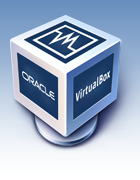VirtualBox is a versatile virtualization software that allows users to create and run multiple virtual machines on a single physical machine. With its user-friendly interface and cross-platform compatibility, VirtualBox simplifies the management of virtual machines, making it easy to allocate resources and configure settings. It supports various guest operating systems and offers features like snapshots for efficient testing and experimentation. VirtualBox also enables seamless integration between the host and guest operating systems, facilitating easy file sharing and collaboration. Overall, VirtualBox is a powerful tool for virtualization, catering to both personal and enterprise needs.

Here's a step-by-step guide on how to use VirtualBox:
- Download and Install VirtualBox: Go to the official VirtualBox website (https://www.virtualbox.org) and download the version suitable for your operating system. Follow the installation instructions provided by the installer.
- Launch VirtualBox: Once installed, launch VirtualBox from your applications menu or desktop shortcut.
- Create a New Virtual Machine: Click on the "New" button in the VirtualBox Manager window to create a new virtual machine.
- Configure the Virtual Machine: In the "Create Virtual Machine" dialog box, enter a name for your virtual machine and select the operating system type and version you want to install. VirtualBox will automatically suggest default settings based on your selection, but you can customize them according to your requirements.
- Allocate Memory: On the next screen, you need to allocate memory (RAM) to the virtual machine. Choose an appropriate amount of memory based on the resources available on your host machine and the requirements of your guest operating system. It is generally recommended to allocate at least 1 GB of memory.
- Create a Virtual Hard Disk: In the "Hard Disk" section, select the option to create a new virtual hard disk. Choose the file type and storage location for the virtual hard disk. You can select the dynamically allocated option to have the virtual disk grow in size as you use it, or choose fixed size to allocate the entire disk space immediately.
- Configure Virtual Disk Size: Specify the size of the virtual hard disk. This will determine the maximum amount of disk space the virtual machine can use. Choose an appropriate size based on your needs and the available disk space on your host machine.
- Download a Guest Operqting System: For this guide, we will use Ubuntu Desktop 22, available here: https://ubuntu.com/download/desktop
- Install the Guest Operating System: With the virtual machine created, select it from the VirtualBox Manager and click on the "Start" button. VirtualBox will prompt you to select a startup disk, which is the ISO file or physical CD/DVD containing the guest operating system. Browse and select the appropriate disk, then click "Start" to begin the installation process.
- Follow the Installation Wizard: The guest operating system installation process will begin. Follow the on-screen instructions provided by the installation wizard of your chosen operating system. This will vary depending on the specific OS you are installing.
- Interacting with the Virtual Machine: Once the guest operating system is installed, you can interact with it as if it were running on a physical machine. VirtualBox provides different ways to interact with the virtual machine, including a windowed mode, full-screen mode, or seamless mode (depending on your host operating system and VirtualBox settings).
That's it! You have now set up and installed a virtual machine using VirtualBox. You can create additional virtual machines by repeating these steps as needed. Remember to install VirtualBox Guest Additions inside the guest operating system for better integration and enhanced performance.
